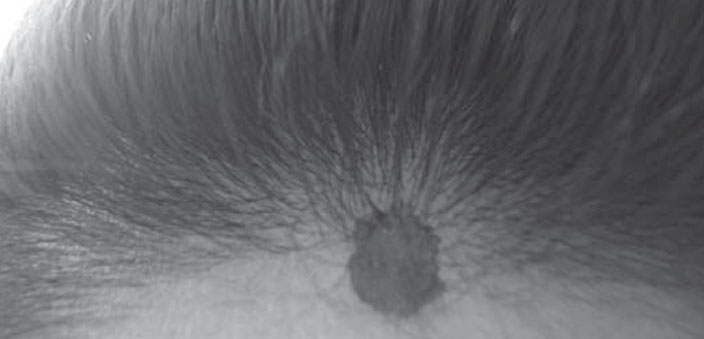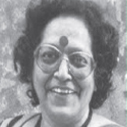Is the bindi a fashion statement, a caste mark or a marriage symbol? It is all three. History shows that men of royalty, priestly families and of high caste, all sported a mark in the centre of their forehead because it was a mandatory cultural custom. It also symbolised whether a man belonged to the Shaivite community or the Vaishnavaite school of philosophy and religion. Hinduism is believed to mainly consist of two sects – Vaishnavites and Shaivites. Those who worship Mahavishnu and are born into the Vaishnavite sect are called Vaishnavites. Those who worship Shiva are called Shaivites. A Vaishnavite would wear the religious symbol vertically on the forehead, like a “U”.The Shaivites draw three horizontal parallel lines marked with a vertical centre. Though Lord Rama is one of the ten avatars of Lord Vishnu, he is said to have descended from the Sun, and wore a mark in the centre of the forehead depicting the Sun. He was therefore called Suryavanshi.
Children in Hindu families wear a dot of curd on the forehead as an auspicious sign before a job interview or an examination for good luck. In a Bengali marriage, the forehead of both the bride and the groom is marked with a decorative bindi drawn out of sandal paste (chandan) to signify the auspicious event. A traditional custom among Hindu married woman generally from the West, the South and the East is for a married woman to greet another married woman with a bindi as a welcome sign and the one so greeted returns the ritual.
On the dot
Bindi is derived from the Sanskrit word bindu or drop, and suggests the mystic third eye. The spot where the bindi is worn, between the two eyebrows, is a major nerve point in the human body. This spot is the sixth chakra known as the agnya, meaning,“command”. It is the seat of concealed wisdom. It is the central point where all experience gets concentrated. According to tantrik philosophy, during meditation, the latent energy (kundalini) rises from the base of the spine towards the head, and this agnya is the probable outlet for potential energy. It is also the central point of the base of the creation, symbolising auspiciousness and good fortune.
Also loosely known as ‘tika’, ‘pottu’, ‘sindoor’, ‘tilak’, ‘tilakam’, ‘teep’, ‘kumkum’, a bindi was originally a small or a big, eye-catching round dot made on the forehead as a facial adornment. The bindi remains one of the most beautiful and fascinating facial adornments that add grace and femininity to women. In Maharashtra, Gujarat, the Punjab and some southern states, girls choose to wear a bindi, while in Uttar Pradesh, Bihar, Orissa, West Bengal and
Assam, it is a mandatory practice of the married woman, though unmarried girls can also wear it. The same applies to married women in Nepal.
A red dot on the forehead is an auspicious sign of marriage and guarantees the social status and sanctity of a married woman. The red bindi on the forehead of the Indian bride is believed to usher in prosperity, and grants her a place as the guardian of the family’s welfare and progeny. Earlier, the bindi came in powdered form in different shades of red, from orange to vermilion to brick red to maroon. Limited options were taken with black. With time, the powder was replaced with thick colored paste sold in plastic capsules. This went away with the popular sticker bindi that comes in every imaginable shape, colour, size and design. Crooner Usha Uthup uses the first consonant of the Bengali alphabet “kaw” like a bindi as an expression of her love for Kolkata.
Ingenuous jewellery designers hit upon the bejeweled bindi in precious and semi-precious stones. Bindis decorated with stars and sequins are very popular for festivals and parties. Youngsters now wear these bindis in different parts of their body in place of tattoos! There was a phase when not to wear a bindi was considered a fashion statement that did not stay for long.
The role of Indian TV in the evolution of the bindi
Television is responsible for the resurrection of the bindi and for giving it a new identity as a fashion statement. The journey began with Shanti on Doordarshan where the young and naïve Mandira Bedi in the title role attracted everyone with her strikingly original bindi, an arrow in reverse instead of the normal red dot. This was followed by Neena Gupta’s mega-serial Saans where the title logo was a red bindi underlined with a black line, a beautiful metaphor for the commitment of a modern wife and mother to her family. Ekta Kapoor’s serials brought about the radical metamorphosis of the bindi. Says Sudha Chandran who made the zig-zag parting of her hair in Ekta Kapoor’s Kahin Kissi Roz a fashion statement, “My bindis were more memorable than my performance in the serial”. The round red bindi is reserved for the sati savitri housewives in saas-bahu serials, while all kinds of squiggles, triangles, question marks, often in black, decorated with sequins and stars, depict the femme fatale.
Ramayana, the late Ramanand Sagar’s epic serial, showed Rama sporting the mark of the sun with rays spreading out on the forehead to signify that he was Suryavanshi, a descendant of the Sun God. Every God from the Hindu pantheon wears this mark on the centre of the forehead. The same applies to all serials based on Hindu mythology where even widows don a white bindi of sandalwood paste.
The bindi – the silent protagonist of our films
The large screen lost its love affair with the bindi since Meena Kumari’s big red bindi in a hundred different films followed by Hema Malini and Rekha. The bindi faded out with the entry of stars like Sridevi, Karisma Kapoor, Madhuri Dixit and Priyanka Chopra sporting foreheads completely stripped off the bindi. Bindiya chamkegi remains one of the most memorable songs framed around the bindi from the hit film Do Raaste (1969). Hindi mainstream cinema thrived on the bindi as signifier of many things between 1959 and midseventies. The blurred bindi suggested rape of the protagonist Radha in Mother India. It stood for loss of virginity upon marriage in umpteen films, while wiping it out when a suhaagan becomes a widow was also an oft-repeated metaphor. In Basu Bhattacharya’s Anubhav (1971), the blurred bindi suggests reunion between a couple after a phase of misunderstanding. Make-up artist Rajesh Patil blames the Westernised look of Hindi mainstream cinema’s female characters for the fading out of the bindi from cinema. But Sanjay Leela Bhansali brought it back in Devdas, and Parineeta took it up later.
Kunku (1937), a Marathi film directed by V. Shantaram, was about Nirmala, a young orphan, married to a widower old enough to be her father. The director placed repeated stress on Nirmala’s half-afraid and half-defiant act of putting on kumkum every morning. Her rebellion is a conscious one, a tragic irony on her sham of a marriage. Her act of looking in the mirror repeatedly stresses her introspection and her fear of her uncertain and dark future. Till the end, she refuses conjugal rights to her husband who, from a sense of deep guilt, commits suicide. Asha Hariharan who runs a beauty salon in Mumbai, echoes this stating that the bindi represents liberation. Young girls who happily wear the bindi now often worn as a tattoo, temporary or permanent, with their sweatshirts and jeans flaunt the ‘unwritten’ code that the bindi tatoo goes only with Indian attire. Women in the West go gaga over the bindi. The bindi today signifies different things to different people. For women in South East Asia and even Europe, it is now a fashion statement and a symbol of changing culture in a globalised world.


